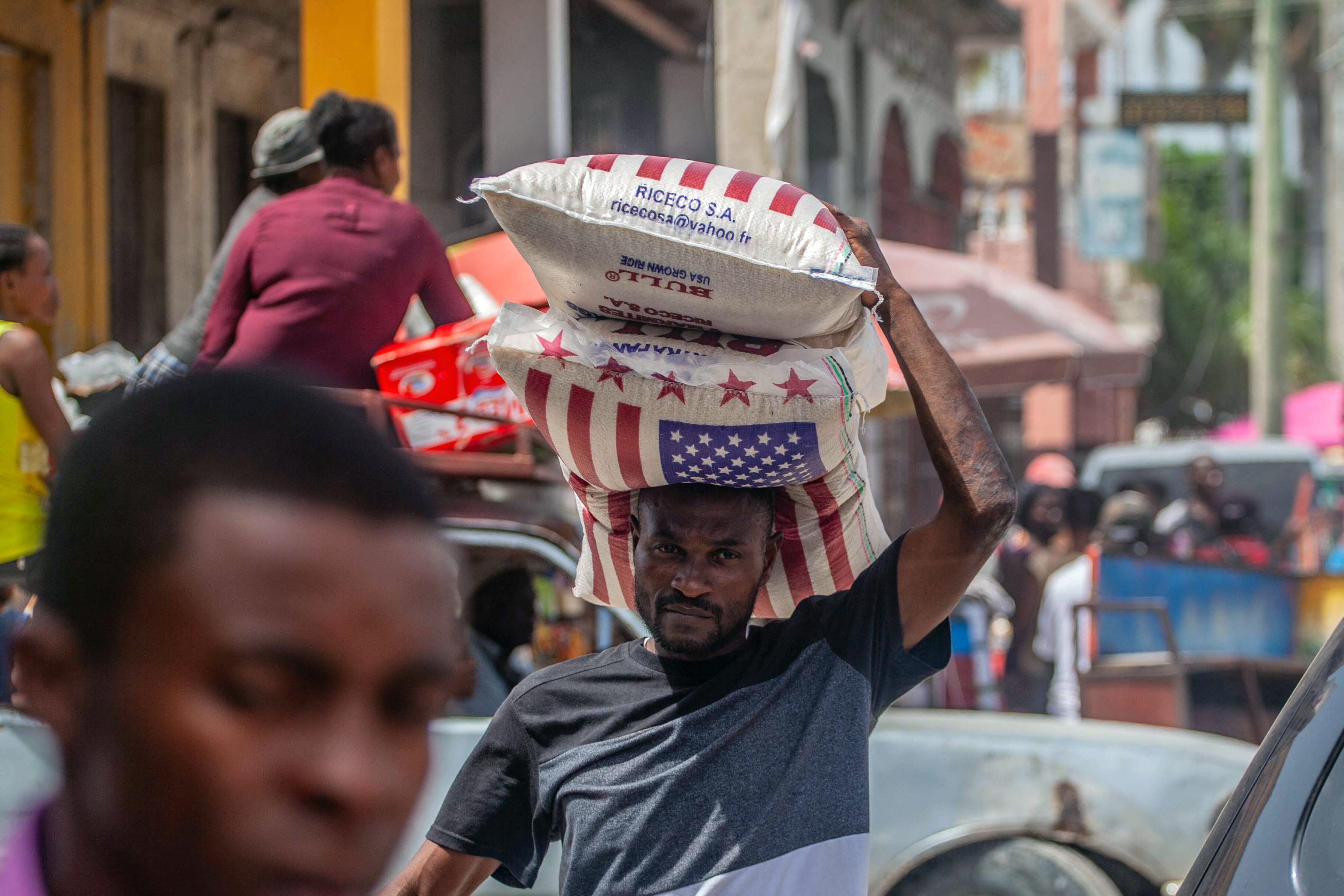Haiti is in desperate need after a devastating earthquake, a hurricane, a presidential assassination, and not enough vaccines to stop the delta variant. International aid is pouring in, which is all good, but not good enough.
It is time to ask about what Haiti is owed—not in terms of international benevolence or moral duty, but as a matter of basic legal rights and principles. Many think of Haiti as a debtor nation, but the fact is that former colonial powers might be the ones legally in debt to Haiti. And the basis for that debt is not just a generalized grievance about colonial domination, but something much more tangible: Haiti once had something of great value, and the United States took it. That something is a small, uninhabited, rocky island covered in a million tons of sun-baked bird poop.
The island of Navassa is about 30 miles off the coast of Haiti and is covered in centuries’ worth of accumulated bird droppings—guano. Sometimes referred to as “white gold,” guano is a potent fertilizer that in the mid-1800s was a scarce resource for which American farmers were desperate. Peru had large amounts of the stuff, but its near monopoly position and special deal with Britain meant that American farmers were priced out. In 1850, guano was $76 a pound—a quarter of the price of gold at the time. The situation was so dire that President Millard Fillmore devoted portions of his 1850 State of the Union address to the subject.
To solve the problem, the U.S. resorted to a kind of privatized colonialism. The Guano Islands Act of 1856 (which, incredibly, is still on the books) authorized American entrepreneurs to search the world and seize unclaimed islands anywhere that guano could be mined. The key implication was that the might of the U.S. Navy would back up Americans’ claims.
Perhaps unsurprisingly, administration of the act was—pardon—a shit show. A State Department analysis in the 1930s concluded that many of the islands seized under the act actually already belonged to other nations, and the U.S. has quietly returned many of them over the years.
Not so with Navassa. In 1857, Haiti was not yet mining the guano on the island in its backyard, but when American entrepreneurs claimed the island, Haitians protested. The U.S. responded by sending its navy to Port-au-Prince to tell the Haitians to stay away from Navassa.
Such behavior is not surprising. In 1857, the U.S. did not even recognize Haiti as a nation, even though it had become independent a half-century earlier (having been forced to literally purchase its freedom from France). The fact that Haiti emerged from a slave revolution was offensive and scary to many American politicians, who feared that recognizing Haiti would encourage enslaved people in the U.S. to think of their own revolution.
Haiti, for its part, has continued to quietly maintain its claim to Navassa—the constitution of Haiti even says so. But Haiti’s near-vassal state relationship with the U.S. over the past century-and-a-half has meant that no Haitian government has been willing to bring formal claims for the unlawful taking of its property.
In ordinary life, if someone takes your property and keeps it by threat of force, the law is supposed to provide a remedy—generally the return of the asset and monetary compensation for the opportunity costs of having not had use of the asset. Even if the government takes part of your land for public use, you’re constitutionally entitled to just compensation. So why not Haiti? Some might object that historical injustices at a certain point become too attenuated or complex to remedy with money—that is a common argument against reparations for slavery, or the illegitimate conquest of inhabited territory, or pillaged art. Haiti has plenty of those larger claims as well.
But maybe we can start small, with the taking of that little island covered in bird droppings. Navassa is a tangible, transferable piece of real property that was taken from Haiti at a time when it was covered in one of the world’s most valuable assets. Whether we call it a debt, damages, reparations, or an offer to settle a disputed claim, it is long past time for the U.S. to pay up.
And how much is the bill? Some back-of-the-envelope calculations suggest that it’s pretty substantial. In 1857, it was estimated that there were a million tons of guano on Navassa, piled between one and six feet deep. Using conservative estimates (and assuming no further deposits by seabirds), the million tons would have been worth about $2 billion in today’s dollars. And if that money earned a return rate of between 1 and 3 percent per year for 170 years, we’d be looking at between $10 billion and $260 billion. That wouldn’t solve all of Haiti’s problems. But it would be a step toward remedying what we’ve taken.
Joseph Blocher and Mitu Gulati are faculty in the law departments of Duke and U. Virginia respectively. Their article, “La Navassa: Property, Sovereignty and the Law of the Territories” is forthcoming in the Yale Law Journal.
